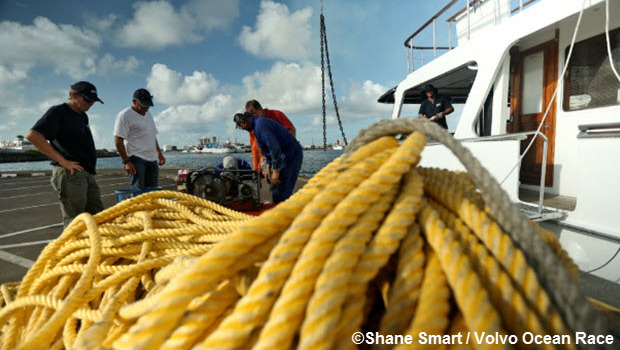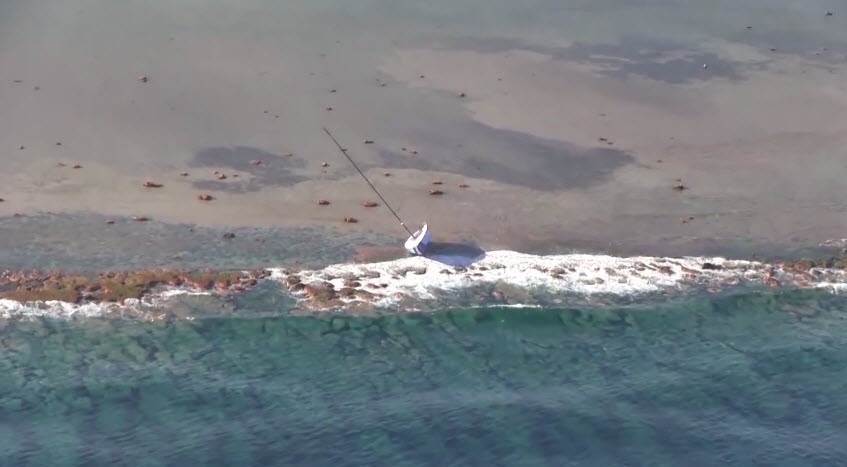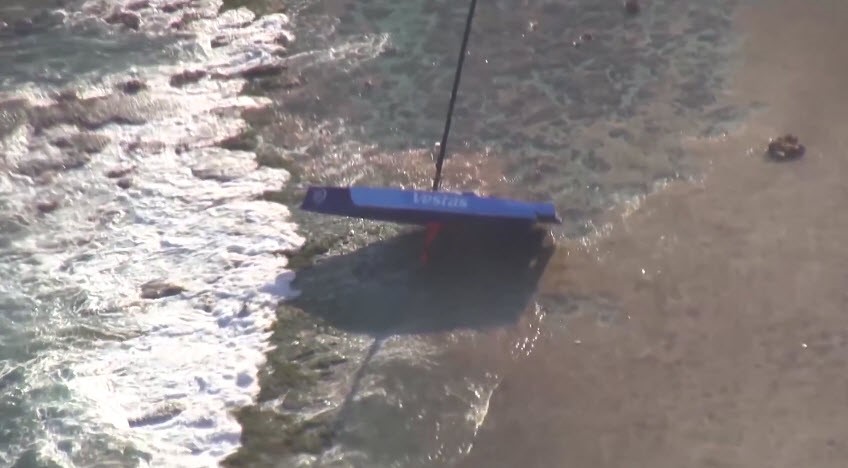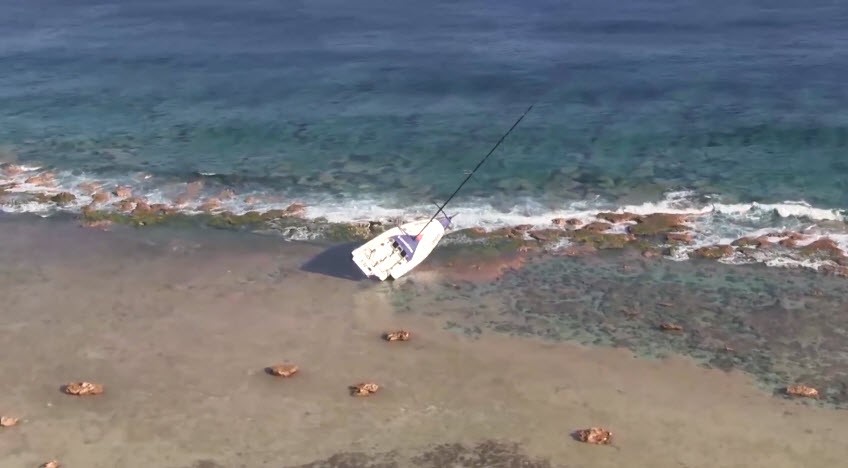Vestas begins Indian Ocean salvage for Volvo Ocean 65
Published on December 18th, 2014
Neil Cox has been Chris Nicholson’s shore manager for two Volvo Ocean Races before they entered their third one together with Team Vestas Wind.
But the Aussie expert had never, ever been in the situation he is in now – heading to a remote Indian Ocean reef to recover the blue Volvo Ocean 65 after it ran aground in the middle of the second leg, on November 29.
“The ultimate plan, the gold-medal prize we’re reaching for, is to get the boat buoyant enough to float it across the lagoon to get it into more protected water,” explains Cox. “It’s a case of how structurally sound the boat is, and what we can utilise to get it buoyant again.”
Vestas skipper Nicholson had doubts about removing the boat from the direction it came in from. “I certainly don’t think you can get a barge anywhere near it; it’s too dangerous on the deep water side. There’s almost always too much swell, and it’s pushing you straight onto the reef.”
While the boat is not deemed repairable, the team is eager to salvage as much as they can. “If anything can be recycled or used for a potential new boat, we have to do everything in our power to make that happen. We want to bring as much of the boat back as possible,” asserts Cox.
Floating the boat off the reef provides the best chance to salvage the boat and limit environmental impact. “It would stop it disintegrating out on the reef,” notes Cox. “At the same time, once we get to the other side of the reef, it gives us the chance to set it up in a controlled fashion to either be able to tow the boat back to Mauritius, or there is a Maersk Line ship coming on Monday and we’re hoping to use their derrick to get it on the ship.”
The alternative is to dismantle the entire boat – hull, equipment, and spar – on the reef and remove it in pieces.
“Every now and then I feel like I’ll wake up and it’ll all just be a crazy dream, and I’d say, ‘wahoo, wasn’t that the worst dream I’ve had in a long while?’,” shares Cox. “The race has taken me through some pretty bizarre scenarios, but I would say that this one is pretty unique.”
Nicholson joined him in Mauritius on Wednesday evening (Dec. 17). They’ve set up the recovery operation in Port Louis, liaising with local resources, chartering a boat they’ll use as a mother ship, getting all the necessary tools through customs and the permits to go back to the Saint Brandon archipelago.
In the meantime, the Île du Sud inhabitants have maintained a watch on the boat, and sent some photos with the supply boat two days ago.
It appears that the boat hasn’t moved much. Cox and Nicholson are now enroute to the location along with their shore crew Tom Kiff plus two local guys, five recovery people from Durban, South Africa, and a cameraman.
“The rest of the team offered to come and help,” adds Cox, “but there is nothing out there so you cannot take a whole work force with you because you cannot provide enough water or power for everyone.
“We’ll base ourselves on this mother ship, on the inside of the lagoon. It’s on the leeward side of the reef and two and half miles away from the boat. The ship has the facilities for us to live onboard, because there is no way for us to stay on the island. We’ve also chartered local fishing boats to cross the lagoon everyday.
“The reality is, it’s a very dangerous workplace we’re going to. It doesn’t have all the nice things we have in the stopovers… it’s in the middle of the ocean. We’re on our own. And, while I’d avoid the cheap shark headlines, yes, there is a lot more activity on the reef at nighttime. We’ll get there by sunrise Friday (Dec. 19). We’ll go straight to the boat after that.”
Source: Edited from Volvo Ocean Race media
Photos below taken shortly after the grounding
Photos – Video














 We’ll keep your information safe.
We’ll keep your information safe.